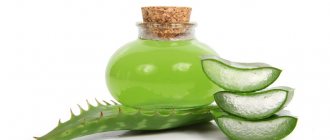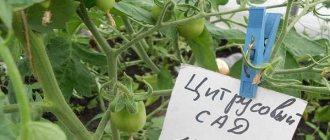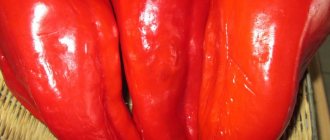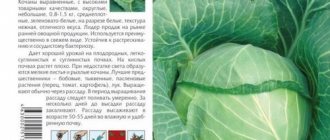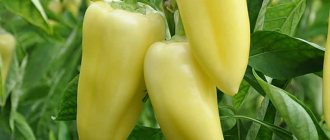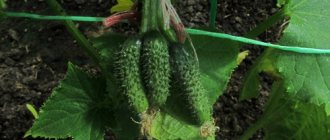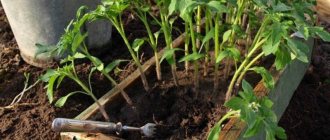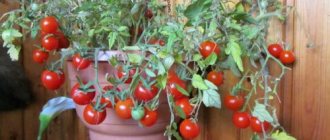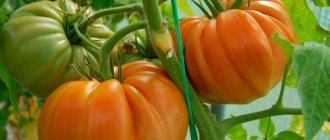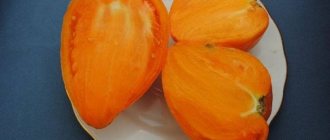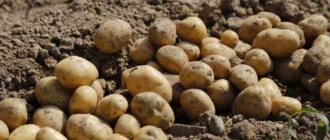Description
The variety belongs to the mid-season varieties; approximately 116-120 days pass from germination to fruit ripening. The bush is indeterminate, grows from 150 to 180 centimeters. The stem is quite strong, medium leafy, the inflorescence is simple, 3-4 fruits are formed on one. The foliage is large, dark green. The fruits are flat-round in shape, smooth, and at the ripe stage are bright red. The tomatoes are quite large, 200-350 grams. But there may be more on the lower hand. Their skin is dense, the flesh is fleshy, and has an excellent taste. With the prescribed care, you can get up to 5 kg of juicy ripe tomatoes from one bush, which is not bad.
Interesting!
During the season, the plant forms from 7 to 10 clusters.
This variety was created specifically for the Urals, but it can be planted throughout Russia. It is recommended to grow plants in greenhouse conditions. Tomatoes can be eaten fresh, added to various dishes, and can also be preserved for the winter, in the form of juice, salads, lecho and sauces.
Varieties for the Ural region
In the Urals and Siberia, the best varieties of tomatoes are early ripening ones. Those hybrids and varietal tomatoes whose ripening period is June-July have time to ripen . The early harvest is used to prepare salads and other vegetable and meat dishes. Therefore, salad varieties with good taste are of interest.
The following hybrids are zoned in the Ural region and show good results:
- Burzhuin F1.
- VIP F1.
- Erofeich F1.
- Cherry strawberry F1.
- Pink miracle F1.
Hybrid Burzhuin F1 produces a medium-sized fruit crop (180 g) in a short time (95-100 days). The shape of the fruit is flat-round with pronounced ribbing. The color of the skin and pulp when ripe is red. The taste is typically tomato, sweet and sour.
Bigwig F1 is another hybrid grown in the Urals. The bushes are low, determinate type. The fruits are red, not large (115 g), ripen early (90-100 days).
Erofeich F1 is a determinate plant, early ripening (90 days). The fruits are not large (100 g), red. The shape is flat-round with ribbing along the perimeter. The pulp has an excellent tomato taste.
Cherry strawberry F1 is a plant with bushes of medium height up to 140 cm. The fruits are shaped like garden strawberries. They are collected in brushes of 6-7 pieces. The shape is elongated, oval. The pulp is sugary, raspberry in color. Weight up to 110 g. They ripen already on the 95th day from planting. The plant has excellent immunity to mosaic and late blight.
The pink miracle F1 begins to ripen after 85 days. This hybrid is grown successfully both in the ground and in greenhouses (film, polycarbonate). Sweet fruits weighing up to 100 g are characterized by increased sugar content. The pink flesh is juicy and tasty. From a square meter of ridge you can collect up to 20 kg of fruit.
When planting any variety or hybrid, you need to take into account varietal characteristics. The planting scheme and care must comply with the instructions given on the package of seeds. Compliance with all conditions is a guarantee of the harvest declared by the manufacturer for each specific variety.
Diseases and prevention
It has excellent resistance to common diseases, such as tobacco mosaic virus, but it cannot be treated and can cause significant damage to fruits. And also to fusarium and cladosporiosis. The fruits are also resistant to cracking and can be stored and transported for a long time, while maintaining an attractive appearance. But, unfortunately, there is no variety yet that is 100% resistant to late blight, so it is necessary to prevent the disease; it is much easier than treating it later.
Weather resistance
The variety tolerates temperature changes well, because it is adapted to the Ural climate, where cold snaps are not uncommon. Fruits on the bushes will be actively set even in cool and cloudy weather. “Ural” also endures overheating.
Advantages
- Large beautiful fruits.
- Great taste.
- Natural immunity to many diseases.
- Can be stored and transported.
- High yield.
- Uniform ripening.
Flaws
- It is necessary to tie the bushes to the support and remove the stepsons.
- Productivity greatly depends on growing conditions and care.
Varietal characteristics
The Ural giant tomato is a high-yielding variety, with proper care per 1 square meter. m can be collected 15 kg and above. The high yield is explained by the fact that the plant produces 3-5 large fruits on each cluster. As a rule, the first crop harvested grows much larger than subsequent fruits. If the task is to grow giant tomatoes, then it is necessary to thin out the flower clusters every 7 days.
The yield is influenced not only by the characteristics of the variety, but also by climatic conditions, region of growth and compliance with care rules.
Tomatoes of the Ural Giant variety are moderately resistant to diseases. Often a tomato bush is affected by:
- late blight - leaves and fruits become covered with dark brown spots;
- brown spotting - round yellow spots appear on the outside of the leaf, a brown velvety coating forms on the inside;
- fruit cracking – fruit defect occurs due to irregular watering;
- macrosporiosis - brown spots form on the leaf blade, trunk and cuttings.
Important! The disease occurs with high humidity and infrequent ventilation.
To protect the Ural Giant tomato from unexpected guests, it is necessary to follow preventive measures:
- observe crop rotation;
- carry out autumn digging of the site;
- before planting the crop, spill the soil with boiling water or a solution of potassium permanganate;
- grow seedlings from proven seeds that have undergone the disinfection stage.
Pros and cons of the variety
The Ural giant tomato has its positive and negative sides. The advantages include:
- high productivity;
- large mass of fruits;
- the variety is resistant to sudden temperature changes;
- good taste and rich aroma;
- Tomatoes contain a high content of vitamins and microelements.
The disadvantages of many summer residents include the inability to maintain integrity during long-term transportation, instability to diseases and garter to a support.
Agricultural technology
As stated above, this variety requires regular care; this will guarantee high yields. To plant seeds for seedlings you will need:
- Convenient container.
- Viable seeds purchased from trusted suppliers.
- Fertile soil for seedlings.
Soil is poured into the container, slightly moistened and grooves 15 mm deep are made in it, seeds are sown in them, at a distance of 2 cm. You should not reduce it, this will thicken the planting and the seedlings may stretch out. A comfortable temperature for seedlings is 18-22 degrees, the room should be well lit, it is better to place containers with seedlings on the windowsill. In the evening, it is recommended to illuminate young plants with a lamp.
Seedlings are planted in separate containers when one leaf appears. In order for it to develop faster and grow stronger, it can be fed using specialized complex fertilizers for seedlings. The optimal age for transplanting it is 55 days; if the seedlings have not reached this age or are much older, you may not get the expected result. Before planting, hardening must be carried out for 7 days.
Features of the growing season
Vegetable growers in the southern regions can afford to sow early tomato seeds directly into open ground. However, this is not acceptable for farmers in the Urals and cultivation must begin with seedlings.
The seedling period of this variety is no different from all others. The seed is soaked, warmed and sown. Many gardeners practice growing low-growing tomatoes without pinching and without individual containers, and they are absolutely right.
Seedlings of this variety will not take up much space on windowsills, they do not outgrow and do not require additional handling.
It is necessary to plant in the garden at a time when the threat of return frosts has completely passed. It can be planted in greenhouses earlier, but there is no point in taking up expensive space with this variety.
When choosing a landing site, the following conditions must be taken into account:
- the area should be the sunniest;
- you can choose any predecessor except nightshade;
- select soils that are light, air-permeable and water-permeable;
- The acidity of the soil should not be high.
Since the variety is standard and its fruits are small, there is no threat of shoots breaking off. The plant does not need supports or garters.
If the soils are sufficiently fertile, then the variety will not require special fertilizing. The removal of nutrients by the variety is not large, due to its small fruit and low yield.
Tomato "Ural Early" reviews, yield and all available information are very ambiguous, so there is no need to sow a lot. By sowing a few seeds and growing bushes, you can understand whether such a tomato is needed in the garden or whether it is better to choose another one.
Transfer
It is better to choose a bright place for tomatoes; they love light and fertile soil; if its acidity is high, it is extinguished with lime; it is advisable to do this in the fall. The recommended planting pattern is 60 by 40; wood ash is added to the holes before planting. Since the bushes are tall, they need support, for this you can use stakes or install a trellis. You also need to remove the shoots weekly, forming plants into 1-2 stems. Approximately in the middle of the growing season, the leaves from below are removed, this will speed up the ripening of the fruit.
Like all Ural tomatoes, you need to water them regularly, but sparingly, without getting them on the leaves, after which the greenhouse should be well ventilated. Weeds are removed as they appear; row spacing must be loosened every 10-12 days. Some experienced gardeners advise mulching the soil with sawdust or grass clippings. Feeding tomatoes is also important; it should be done every two weeks, alternating organic and mineral fertilizers.
Not only for the Urals
Thinking over a strategy for creating new varieties of tomatoes, Russian agricultural breeders set out to combine several genetic lines, embodying all the advantages in one tomato. Experienced scientists have achieved brilliant results.
In 2007, the State Register of Breeding Achievements was replenished with the hybrid tomato Ural F1. The sonorous name hints that the breeding novelty is hardy and unpretentious, capable of tangible returns even in the difficult climatic conditions of the Ural region. The first reviews of the Ural F1 tomato allow us to conclude that the variety is productive in any Russian greenhouses, from St. Petersburg to the Far East.
Agro decided to draw attention to the new hybrid with the help of a small advertising stunt. On the bags of the “1 1” series (in which 25 seeds are placed, and not 10 pieces, as usual), a spectacular name of the variety appeared - tomato Ural Super F1. In fact, it is the same tomato, with the same characteristics. No deception, just an enthusiastic declaration of love from the authors for their selective luck.
